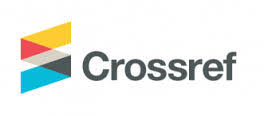The Cointegration Relationship Between Money Supply, Exchange Rate and Economic Growth In Iraq (2004-2020)
DOI:
https://doi.org/10.59759/business.v2i1.112Keywords:
Money Supply, Real Exchange Rate, Economic Growth, IraqAbstract
This study aims to analyze the cointegration relationships between money supply, exchange rate, and economic growth in Iraq, through the use of quarterly data during the period from 2004 to 2020, as well as the use of Johansson's cointegration test, The Vector Error Correction Model (VECM), and Granger's causality test, the economic growth equation has revealed the following results: the exchange rate and money supply in the long term have a positive and significant impact on the economic growth during the period 2004-2020. However, in the short term, the real gross domestic product is positively affected by its value and money supply in lag periods and negatively by the real exchange rate, interest rate on lending, and inflation, but the interest rate effect is not significant. As for the exchange rate equation, the relationship between gross domestic product and money supply showed that it is direct with the exchange rate in Iraq during the period 2004-2020 in the long term and that the exchange rate is positively affected by its lag value during previous periods, and the effect of the interest rate on lending and inflation is positive on the exchange rate, but not significant in the short term. The money supply equation showed that the gross domestic product is directly related to the money supply, while the latter is related to an inverse relationship with the exchange rate in Iraq during the period 2004-2020 in the long term, whereas the money supply is related to a direct relationship with the real exchange rate and is negatively affected by the rate of inflation. As for the interest rate on lending, its impact is positive, but not significant, on the exchange rate in the short term. The study recommended that the mutual influence between the real exchange rate and the gross domestic product should be taken into account when drawing and formulating the monetary policy of the exchange rate in Iraq.
Downloads
References
Ahmed, T., Mazlan, S. (2021). The Impact of Interest Rate on Exchange Rate Within ASEAN Countries: Evidence from Linear and Nonlinear ARDL Frameworks. Global Journal of Emerging, Market Economies, 13(1), 7–34.
Akbar, M., Amjad, W., Iqbal, Z. (2021). Nexus of Gold Price-Exchange rate-interest rate-Oil Price: Lessons for Monetary Policy in Pakistan. International Journal of Business & Management, 16(1), 1-16.
Blanchard, O. (2017). Macroeconomics. 7th Edition, Pearson Education Limited.
Froyen, R. (2012). Instrument versus Target Rules As Specifications of Optimal Monetary Policy. International Finance, 15(1), 99–123.
Krugman, P., Maurice, O., Marc, M. (2022). International Economics: Theory and Policy, 12th Edition , Pearson.
Maitra, B. (2015). Monetary Policy, Income Growth and Price Stability in Malaysia. South Asian Journal of Macroeconomics and Public Finance, 4(1), 91–117.
Mehrotra, A. (2007). Exchange and interest rate channels during a deflationary era: Evidence from Japan, Hong Kong and China. Journal of Comparative Economics, 35(1), 188-210.
Raza, A., Afshan, S. (2017). Determinants of Exchange Rate in Pakistan: Revisited with Structural Break Testing, Global Business Review, 18(4), 825–848.
Tariq, A., Muhammad, M., Tariq, B. (2015). Impact of Interest Rate, Inflation and Money Supply on Exchange Rate Volatility in Pakistan. World Applied Sciences Journal, 33 (4), 620-630.
Vargas, H. (2011). Monetary Policy and the Exchange Rate in Colombia, Borradores de Economia, Borradores de Economia 655, Banco de la Republica de Colombia.
Downloads
Published
How to Cite
Issue
Section
License

This work is licensed under a Creative Commons Attribution-NonCommercial 4.0 International License.






